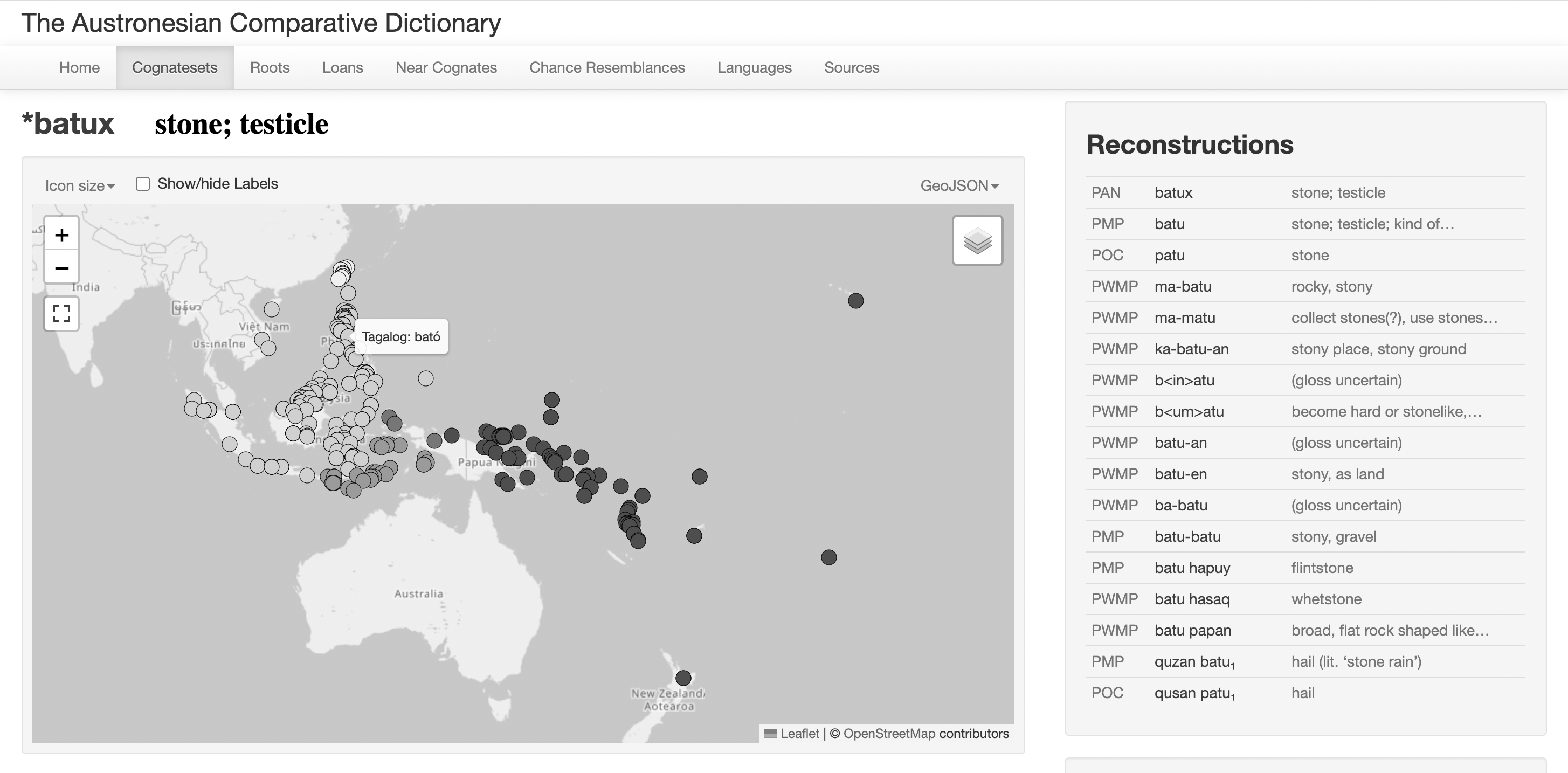Rocks scattered by the last breaths of the Pacific
︎︎︎Single channel video, sound, 5min loop
︎︎︎Single channel video, sound, 5min loop
2023
︎︎︎The Austronesian Comparative Dictionary
![]()
Rocks scattered by the last breaths of the Pacific is, in many ways, a map. A more charismatic than accurate map, I might add. After all, it moves. Like the other faux-cartographic exercises in the exhibition, Rocks continues to reconstruct the narrative of the archipelago by way of resemblances. It takes Gaian Assembly’s4 pareidoliac conceit into linguistic territory, beginning with the serendipitous discovery of the pan-Austronesian word for ‘rock’: batux5. Across the vast latitude of the Austronesian expansion6, from Easter Island to New Zealand, the word batux has seen relatively little variation, for the larger part keeping its disyllabic structure, vowel sounds and, more importantly, meaning. Bato in Tagalog, batu in Malay and Old Javanese, and fatu in Tuvalu all translate to ‘rock’. That these words correspond to the material makeup of islands, archipelagoes and the crust beneath them is no coincidence. Like coconuts setting out to sea in search of foreign coasts on which to fulfill their duty to the species, prehistoric seafarers in this region, arguably less buoyant, what with batux in tow, braved the transpacific.
Some millennia later, the Pacific is no longer as forgiving. As the largest and second warmest ocean7, its tropical and subtropical zones are quite the literal hotbeds for heat-eating storms. Maritime Southeast Asia, being where it is, bears the brunt of climate change even as the crisis’ main driver, global greenhouse gas emissions, come from much larger economies8. Many of these are legacy economies of the Western colonial project that continue to unsustainably extract resources from here, and with the added absurdity of reverse-indebtedness through climate loans instead of grants9. In Rocks, one can observe this lasting impact of colonialism and its surviving neoimperial markets through citizen-footage of storms over rapidly warming Pacific waters in MSEA. Scattering batux around, Rocks’ premise undermines fixed positions based on language in favour of all-around borderlessness. Bato is batu is fatu. The cognates then become a kind of lexical as well as topographical motif, a layered impression of the region’s affinities, from certain colonial history to probable climatic fate.

